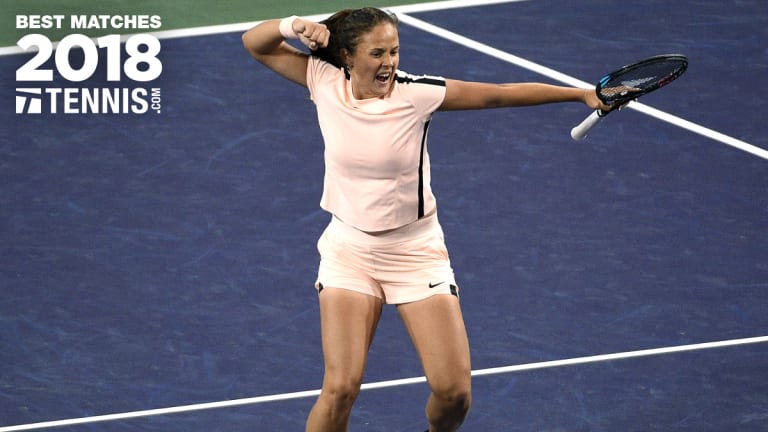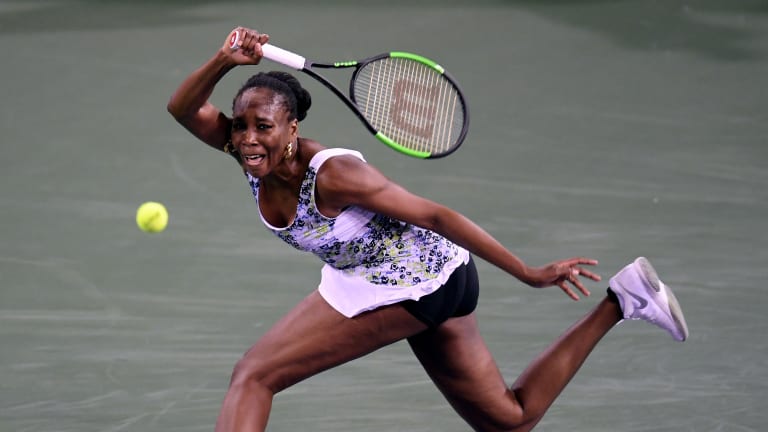That week in Indian Wells, Kasatkina beat Sloane Stephens, Caroline Wozniacki, Angelique Kerber and Williams. While she would lose to Naomi Osaka, who was on her own torrid run, in the final, together they gave WTA fans a forecast of what was to come. Kasatkina would go on to make the quarterfinals at the French Open and Wimbledon, and Osaka would win the US Open.
“Matches like this, you’re just speechless,” Kasatkina said after beating Williams.
“Sometimes I was even smiling on the court,” she said. “Like, in one moment, you just catch, like, you’re in night session, all crowd, you’re playing against a legend, and you’re in the third set, for example. And you’re just staying on the return, and you’re like, ‘Come on, maybe it’s the moment of your life.’”
Equal parts shot-making and sprinting, offense and defense, with 31 break points, 13 service breaks and a game that went to eight deuces, this was a war from start to finish, and neither player could hold onto the momentum for more than two games at a time.
Like her idol, Rafael Nadal, Kasatkina rolled high topspin forehands crosscourt, then stepped forward and cracked them inside out and inside in. With her backhand, she drove the ball to either corner with equal ease, which forced Williams to sprint side to side. Kasatkina buzzed once-handed slices an inch over the net, which forced Williams to bend. As if that wasn’t enough, she threw in her subtle, drop shot at surprising times, which forced Williams to bolt forward. There are few players—Andy Murray comes to mind—who use a two-handed backhand, yet who can also hit a one-handed slice as naturally as Kasatkina does.
“As my coach said, she’s 37 years old, I am 20, so I should go for three sets and then, yeah...,” Kasatkina said with a smile when she was asked how she countered her more powerful opponent.

